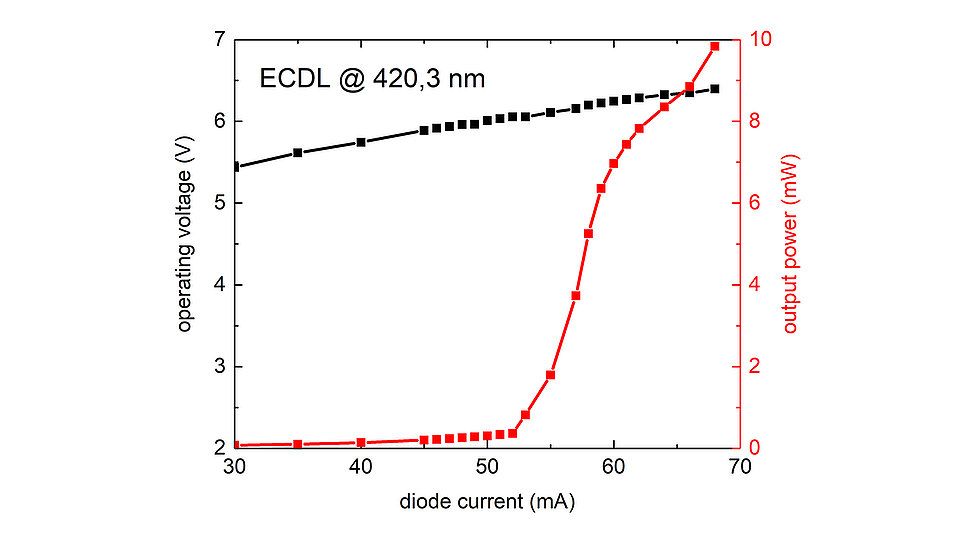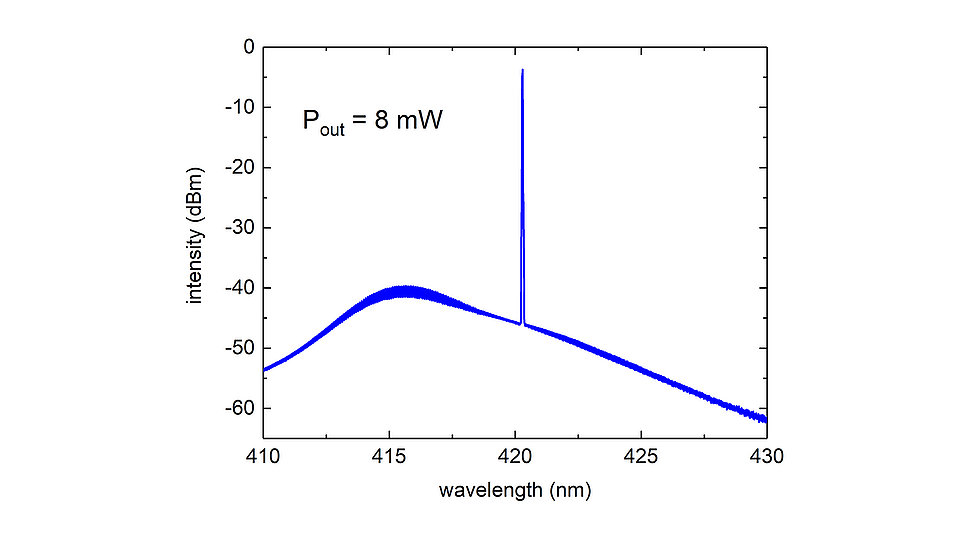Development of a 420 nm external cavity diode laser for quantum optic experiments in space
At FBH, we specialize in GaN-based single-mode ridge waveguide laser diodes in the blue-violet spectral range. These laser diodes generally have a wide range of applications, such as high-resolution spectroscopy, laser displays, biophotonics, non-linear frequency conversion, atomic clocks, and more. As our lasers are highly reliable and have lifetimes of up to 10,000 hours, they are even suitable for perspective use in space. However, the broad emission spectrum of around 1 nm due to multiple longitudinal modes limits their usability for some of the applications mentioned. In order to reduce the width of the emission peak, we have developed a GaN laser-based external cavity diode laser (ECDL) system.
Our system utilizes a gain chip manufactured at FBH. The chip features a highly reflective layer stack coating on its rear facet and an anti-reflective layer stack coating on its front facet. The emitted laser light is collimated with an aspherical lens and directed onto a volume holographic Bragg grating (VHBG), from where it is partially reflected back into the chip to form the laser resonator. Fig. 1 shows the path of the laser beam through the VHBG.
In this configuration, we have successfully demonstrated ECDL operation. Fig. 2 and Fig. 3 illustrate the LIV characteristic of the system and the corresponding spectrum. The spectrum shows the broad spontaneous emission of the laser chip at around 416 nm and the sharp single laser peak of the ECDL at 420.3 nm. The laser runs stably for many hours at the wavelength locked by the VHBG over the entire current range considered. The side mode suppression is greater than 40 dB. The measured linewidth is limited by the resolution of the optical spectrum analyzer, which is less than 20 pm. We are currently working on a precise linewidth measurement using a Fabry-Perot interferometer, which can achieve a resolution of better than 1 MHz. In the future, we plan to integrate such ECDLs into the module technology available at FBH, making them usable for applications in space, such as rubidium atomic clocks.
This work was partly supported by the Federal Ministry for Economic Affairs and Climate Action under contract 50WM2179 (project LARUS).


